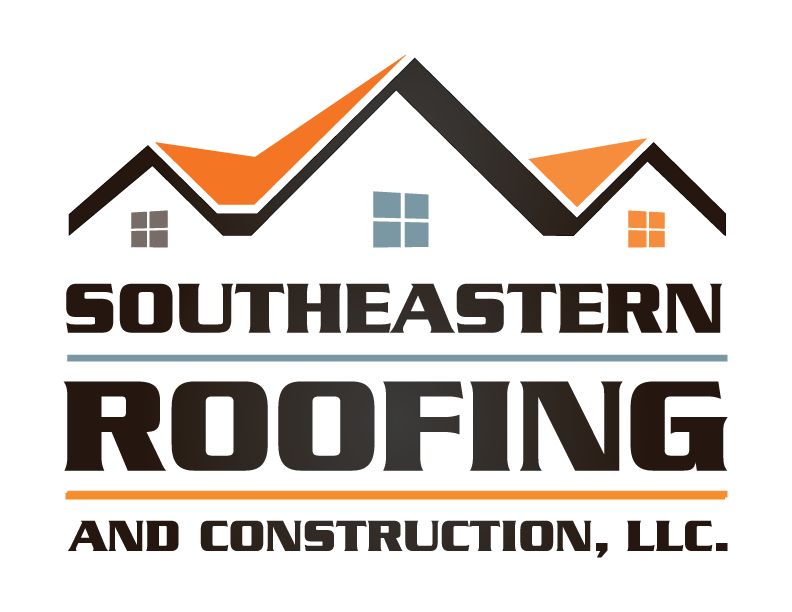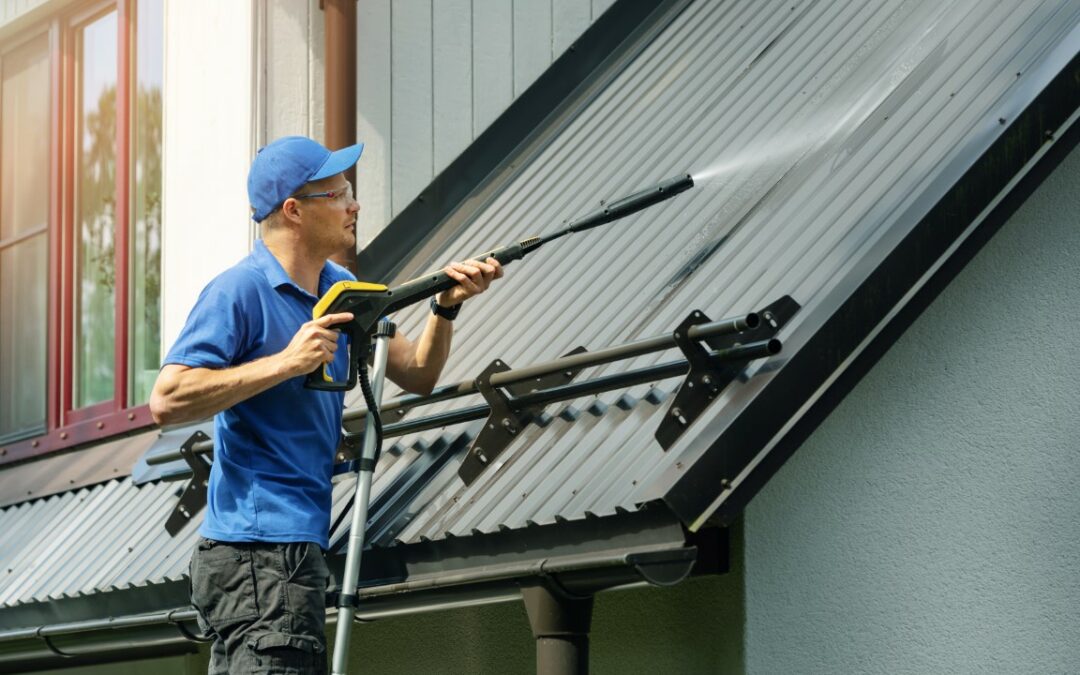We, as homeowners, want to protect our roofs from costly replacements. That’s why we must practice preventive maintenance to prolong their lifespan.
By regularly inspecting, clearing debris, fixing leaks, ensuring proper ventilation, and maintaining gutters, we can keep our roofs in top shape.
Additionally, removing moss and algae growth, insulating vulnerable areas, and trimming overhanging tree branches are crucial steps.
Join us as we explore the roof maintenance practices that will help us avoid the expense and hassle of replacement.
Key Takeaways
- Regular roof inspections and maintenance can identify potential issues before they escalate, prolonging the lifespan of the roof.
- Clearing debris and leaves regularly prevents damage to the roof and reduces the risk of water pooling and leaks.
- Promptly fixing leaks maintains the integrity of the roof and prevents water damage and mold growth.
- Ensuring proper attic ventilation prevents moisture buildup, regulates temperature, and reduces energy costs.
Regular Roof Inspections
To prevent the need for roof replacement, we must regularly conduct roof inspections. By performing routine inspections, we can identify and address any potential issues before they escalate into major problems.
As a part of our roof maintenance checklist, inspections allow us to thoroughly examine the condition of the roof and identify signs of damage. Some common signs of roof damage to look out for include cracked or missing shingles, water stains on the ceiling, and signs of mold or mildew.
Regular inspections also help us identify areas that may require additional maintenance, such as cleaning the gutters or trimming overhanging tree branches.
Clearing Debris and Leaves Regularly
We make it a priority to clear debris and leaves regularly to prevent the need for roof replacement. Proper roof maintenance is essential for the longevity and durability of your roof.
Debris removal plays a crucial role in preventing damage to your roof. When leaves, twigs, and other debris accumulate on your roof, they can trap moisture and create a breeding ground for mold and mildew. Over time, this can weaken the structure of your roof and lead to leaks and other costly issues. By regularly clearing debris and leaves from your roof, you can prevent these problems from occurring and extend the lifespan of your roof.
Additionally, removing debris allows for better drainage, reducing the risk of water pooling and causing further damage.
In the next section, we’ll discuss the importance of fixing leaks promptly and how it contributes to preventing the need for roof replacement.
Fixing Leaks Promptly
Fixing leaks promptly is crucial to maintaining the integrity of your roof and avoiding the need for replacement. Leaks can lead to water damage, mold growth, and structural issues if left unattended. By promptly fixing leaks, you can prevent these problems from escalating and save yourself from expensive repairs or even a full roof replacement.
Regular inspections play a vital role in identifying leaks early on. It’s recommended to inspect your roof at least once a year, or after severe weather events. Look for signs of water stains, dampness, or discoloration on your ceiling, as these are indicators of a leak. Additionally, check for missing or damaged shingles, cracked flashing, or clogged gutters that can contribute to leaks.
By addressing leaks promptly and proactively conducting regular inspections, you can extend the lifespan of your roof and avoid the need for costly replacements.
Ensuring proper attic ventilation is another essential aspect of roof maintenance, which we’ll discuss in the next section.
Ensuring Proper Attic Ventilation
Proper attic ventilation is crucial for maintaining the health and longevity of your roof. Adequate airflow helps to prevent moisture buildup, which can lead to the growth of mold and rot.
Importance of Airflow
To ensure the longevity of your roof, it’s crucial to prioritize proper attic ventilation, allowing for adequate airflow. This is because proper airflow in the attic has numerous benefits for your roof and the overall health of your home.
One of the key benefits is that it helps to regulate the temperature in your attic, preventing the buildup of heat and moisture. This, in turn, helps to prevent the growth of mold and mildew, which can cause structural damage to your roof.
Additionally, proper attic ventilation can also help to reduce energy costs by allowing hot air to escape during the summer months and preventing heat loss during the winter months.
It also helps to prevent ice dams from forming on your roof, which can lead to leaks and water damage.
Therefore, ensuring proper attic ventilation is essential for maintaining the integrity of your roof and protecting your home from potential issues.
Preventing Moisture Buildup
One way to ensure proper attic ventilation and prevent moisture buildup is by implementing effective roof maintenance practices. Preventing condensation and maintaining moisture control within the attic is crucial for preserving the integrity of your roof and extending its lifespan.
Condensation can occur when warm, moist air from inside your home rises into the attic and encounters cooler surfaces, such as the underside of the roof. This moisture buildup can lead to the growth of mold and mildew, as well as damage to the roof structure. To prevent this, it’s important to ensure that your attic has proper ventilation, allowing for the exchange of air and reducing the likelihood of condensation.
This can be achieved through the installation of vents, such as ridge vents or soffit vents, which allow for the flow of fresh air into the attic and the expulsion of moist air. By effectively controlling moisture buildup in the attic, you can protect your roof from potential damage and prolong its lifespan.
Now, let’s explore another crucial aspect of roof maintenance – extending the roof lifespan.
Extending Roof Lifespan
We can significantly extend the lifespan of our roof by ensuring proper attic ventilation. Adequate ventilation helps to regulate temperature and moisture levels in the attic, preventing excessive heat buildup and moisture condensation. This is crucial because excessive heat can cause shingles to deteriorate prematurely, while moisture buildup can lead to rot, mold, and other structural issues. To ensure proper ventilation, it’s important to have a well-designed and properly installed attic ventilation system.
Additionally, considering roof coating options can further enhance the longevity of our roof. Roof coatings act as a protective layer, preventing damage from UV rays, weathering, and other external factors.
Lastly, regular professional roof maintenance offers several benefits, including early detection and prevention of potential issues, prolonging the lifespan of our roof. By following these practices, we can ensure our roof lasts for many years to come.
To transition into the subsequent section about cleaning and maintaining gutters, it’s important to note that proper attic ventilation is just one aspect of roof maintenance. Equally important is keeping our gutters clean and well-maintained.
Cleaning and Maintaining Gutters
Regularly cleaning and maintaining our gutters is essential to prevent costly roof replacements. Gutters play a crucial role in directing water away from the roof and foundation of our homes. When leaves, debris, and other materials accumulate in the gutters, they can block the flow of water, leading to overflow and potential damage.
Additionally, stagnant water in clogged gutters can promote the growth of moss and algae, which can deteriorate the roof’s surface and cause leaks. Cleaning the gutters at least twice a year, or more frequently if necessary, helps prevent the buildup of debris and keeps the water flowing smoothly. Installing gutter guards can also be beneficial, as they prevent leaves and other debris from entering the gutters while allowing water to flow through.
Regular maintenance, such as removing rust and ensuring the gutters are securely attached, is vital to prolonging their lifespan and avoiding the need for costly roof replacements.
Removing Moss and Algae Growth
To prevent the growth of moss and algae, maintaining a regular cleaning schedule is crucial. Moss and algae can damage your roof and lead to costly repairs if left untreated. These organisms thrive in damp and shaded areas, making roofs an ideal environment for their growth. The presence of moss and algae can trap moisture on the roof, leading to water damage and deterioration of roofing materials.
To remove moss and algae, it’s important to use roof cleaning products specifically designed for this purpose. These products typically contain biocides that kill the organisms and prevent their regrowth. When using roof cleaning products, it’s essential to follow the instructions carefully and ensure proper safety precautions are taken.
Regularly removing moss and algae growth will help prolong the lifespan of your roof and prevent water damage.
Insulating and Sealing Vulnerable Areas
Insulating and sealing vulnerable areas is another crucial step in preventing roof replacement.
By taking the necessary measures to prevent condensation and improving insulation, you can extend the lifespan of your roof and avoid costly replacements.
One of the main causes of roof damage is condensation, which can lead to the growth of mold and rot.
By insulating and sealing vulnerable areas, such as the attic and roof vents, you can prevent moisture from entering the roof structure.
This not only protects the integrity of your roof but also helps to maintain a comfortable indoor environment.
Additionally, improving insulation can help to regulate temperature and reduce energy consumption, saving you money on utility bills.
Regularly inspecting and maintaining these areas will ensure that your roof remains in good condition for years to come.
Regularly Trimming Overhanging Tree Branches
We can prevent the need for roof replacement by regularly trimming overhanging tree branches. Overhanging tree branches can cause significant damage to a roof if left unattended. The branches can scrape against the roof, leading to shingle damage and potential leaks. Additionally, falling branches during storms or strong winds can cause severe structural damage to the roof.
To avoid these issues, it’s essential to employ proper pruning techniques and tree management. Pruning techniques involve removing dead or weak branches, thinning out the tree canopy, and maintaining a safe distance between the tree branches and the roof. Regular tree management, such as trimming branches away from the roof and ensuring proper tree health, can greatly reduce the risk of roof damage and the subsequent need for replacement.
Conclusion
In conclusion, by following these roof maintenance practices, we can significantly prolong the lifespan of our roofs and prevent the need for replacement.
Regular inspections, clearing debris, fixing leaks promptly, ensuring proper ventilation, cleaning gutters, removing moss and algae, insulating vulnerable areas, and trimming tree branches will keep our roofs in top condition.
By investing a little time and effort into these preventative measures, we can save ourselves from the hassle and expense of roof replacement in the future.

